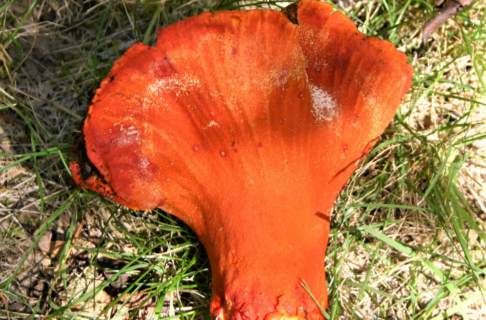Posted on: Monday July 4, 2016

Wetland plants are the least commonly collected and photographed plants in Manitoba for good reasons. For starters they’re protected by the most vicious gangs of thugs you can imagine: bloodthirsty mosquitoes and black flies. I’ve taken many blurry photographs in my day because I was too busy swatting mosquitoes to focus properly. No matter how good the bug jacket is, the pests always seem to find a way in. Wetland work can be utterly exhausting: walking in a bog is like taking a stair climbing class taught by Satan! I got heatstroke from doing bog work once. Further, unless you’ve got a magical inflatable boat that shrinks to the size of a wallet, collecting wetland plants often means one thing: getting wet and muddy, and, if you’re in a bog, potentially sinking to your doom!
Image: Mosquito-eating Pitcherplants (Sarracenia purpurea) and Sundews (Drosera spp.) are a welcome sight (note the fly in the lower pitcher).
There are only two occasions where I thoroughly enjoyed botanizing in wetlands. One was during my field work to find a new species of water-lily (Lori’s Water-lily or Nymphaea loriana) in northern Manitoba. Manitoba Hydro offered to fly my companion John Wiersema and I up to Jenpeg, and to have a few locals take us out on a motorboat to look for it. The great thing about being on a boat is that it is windy enough on the open water to keep the bugs down. On that trip we collected plant specimens for DNA analysis which eventually led to my recent publication in the Canadian Field Naturalist (Read more here).
The other day of enjoyable wetland botanizing happened just last month at the brand new Brokenhead Wetland Interpretive Trail (Find more details here). This gorgeous 1.83 km trail (less than an hour north of the city) runs parallel to the Brokenhead Wetlands Ecological Reserve. If you’ve ever wanted to see rare orchids or carnivorous plants, this is the best way to do it. Almost the entire trail is boardwalk so your feet never get wet and you don’t have to worry about sinking and turning into a bog mummy!
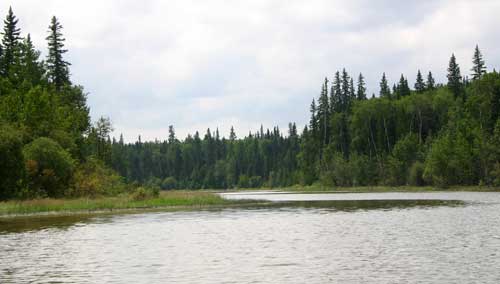
Boreal wetlands are best visited by boat.
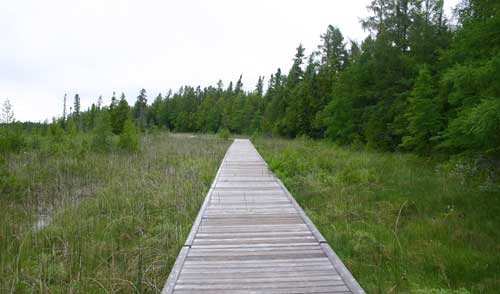
The boardwalk through the fen at the Brokenhead Wetlands Interpretive Trail.
The trail first passes through a fragrant white cedar (Thuja occidentalis) swamp before reaching the more open fen habitat. I was easily able to see four species of carnivorous plants: pitcherplants (Sarracenia purpurea), round-leaved and oblong-leaved sundews (Drosera rotundifolia and D. anglica), and common bladderwort (Utricularia vulgaris). Although it was lovely to see Dragon’s-mouth orchid (Arethusa bulbosa), grass-pink (Calopogon tuberosus), spotted coralroot (Corallorrhiza maculata), and several species of bog-orchids (Platanthera spp.), the bell of the ball was definitely the spectacular showy lady’s-slipper (Cypripedium reginae). One was growing right next to the trail facilitating a perfect photograph!
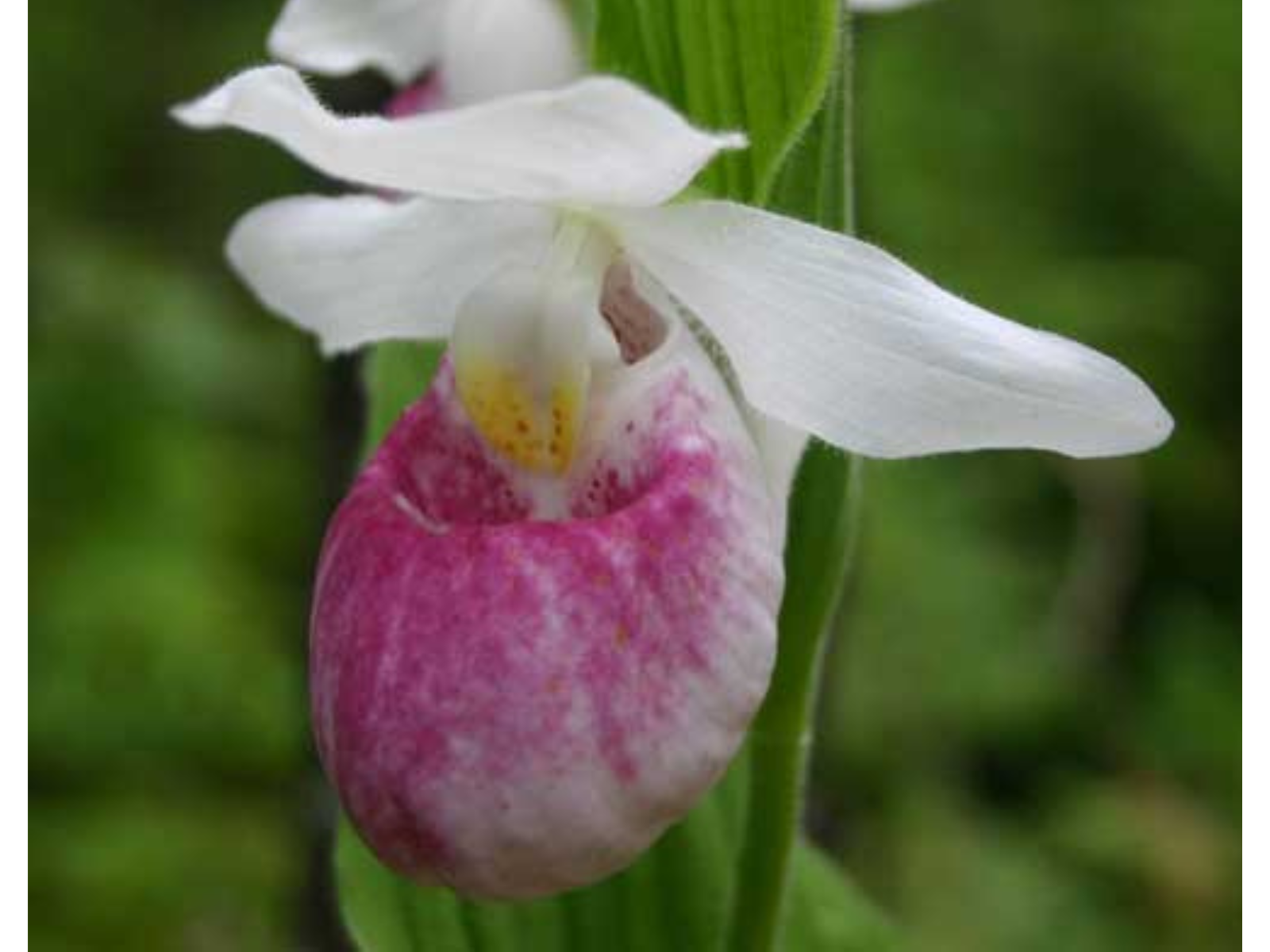
This Showy Lady’s-slipper (Cypripedium reginae) was growing right next to the trail.
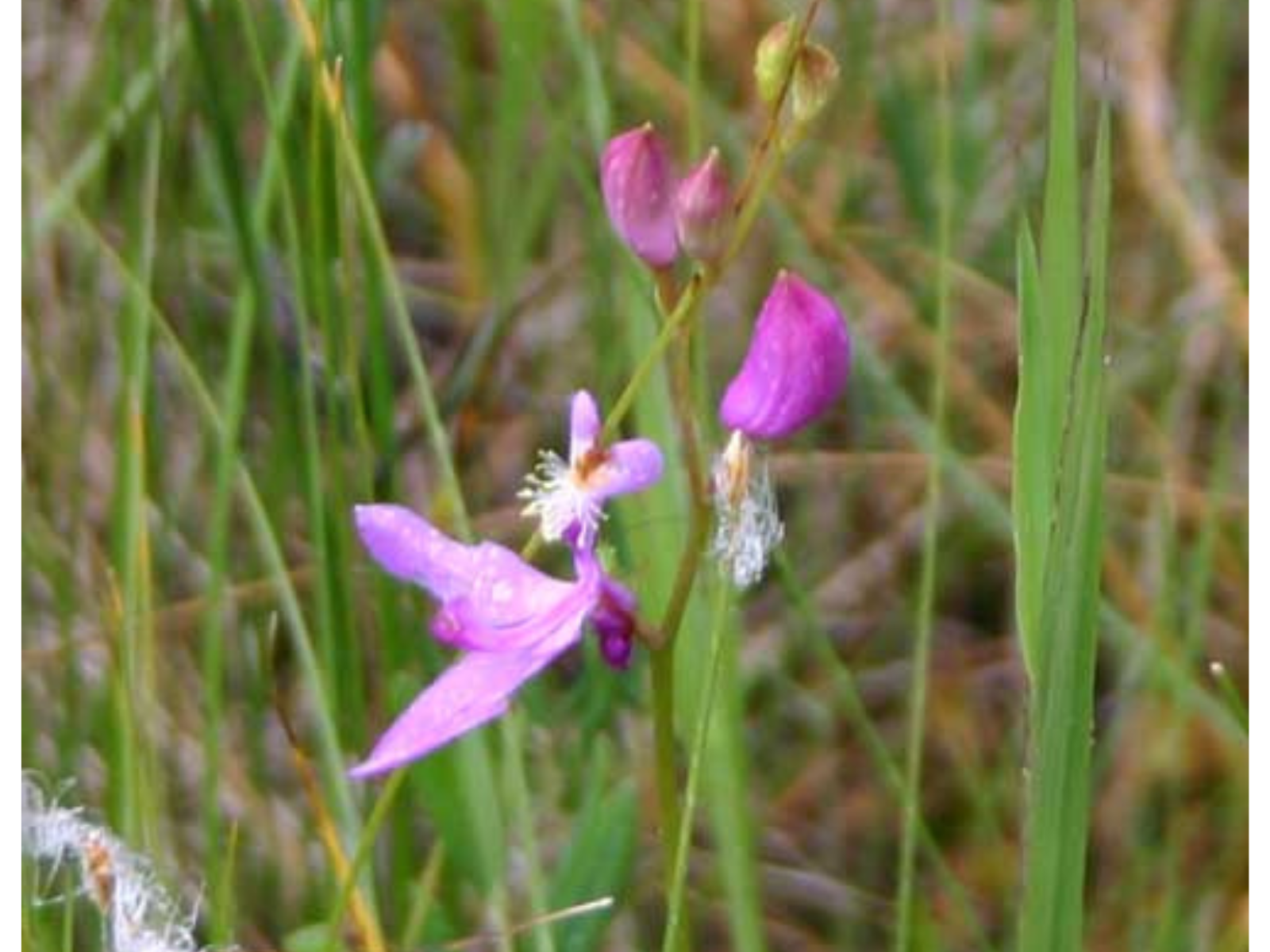
The lovely Grass Pink orchid (Calopogon tuberosus).
I love how the trail was interpreted with a First Nations perspective that included information about traditional Ojibway uses of local plants. It was lovely to be able to visit a wetland where I could appreciate the plants up close. This trail is a must see for nature lovers as it lets you experience a world that you may never see.







